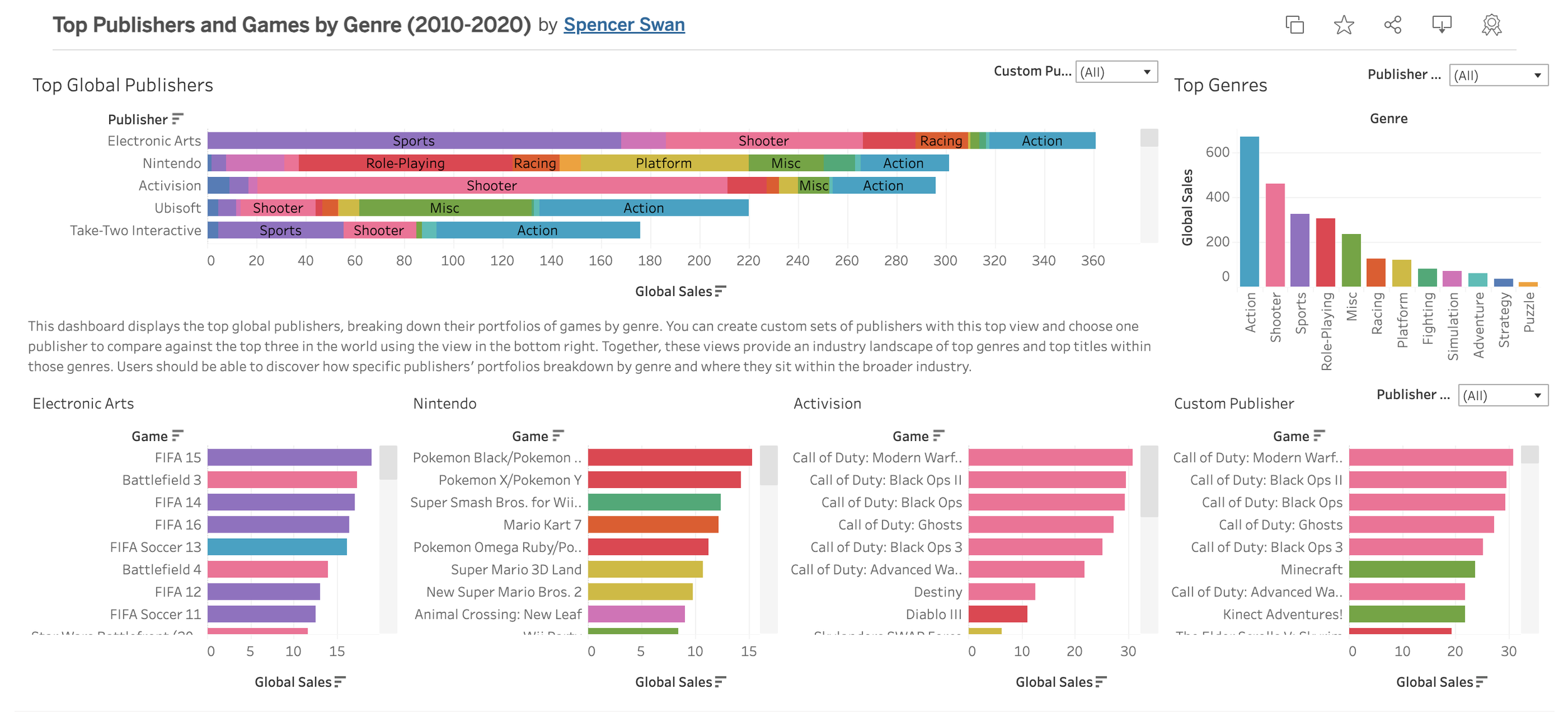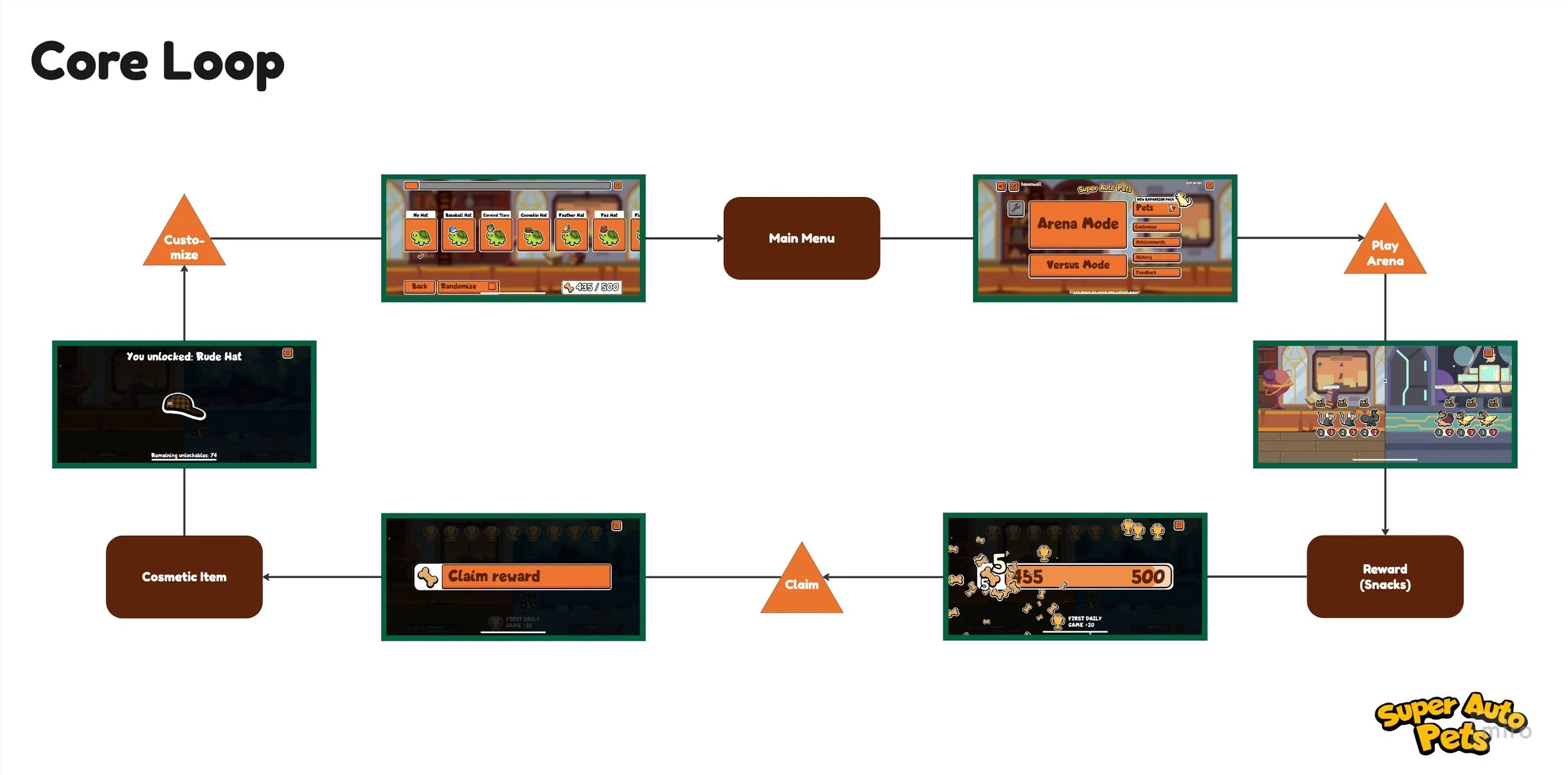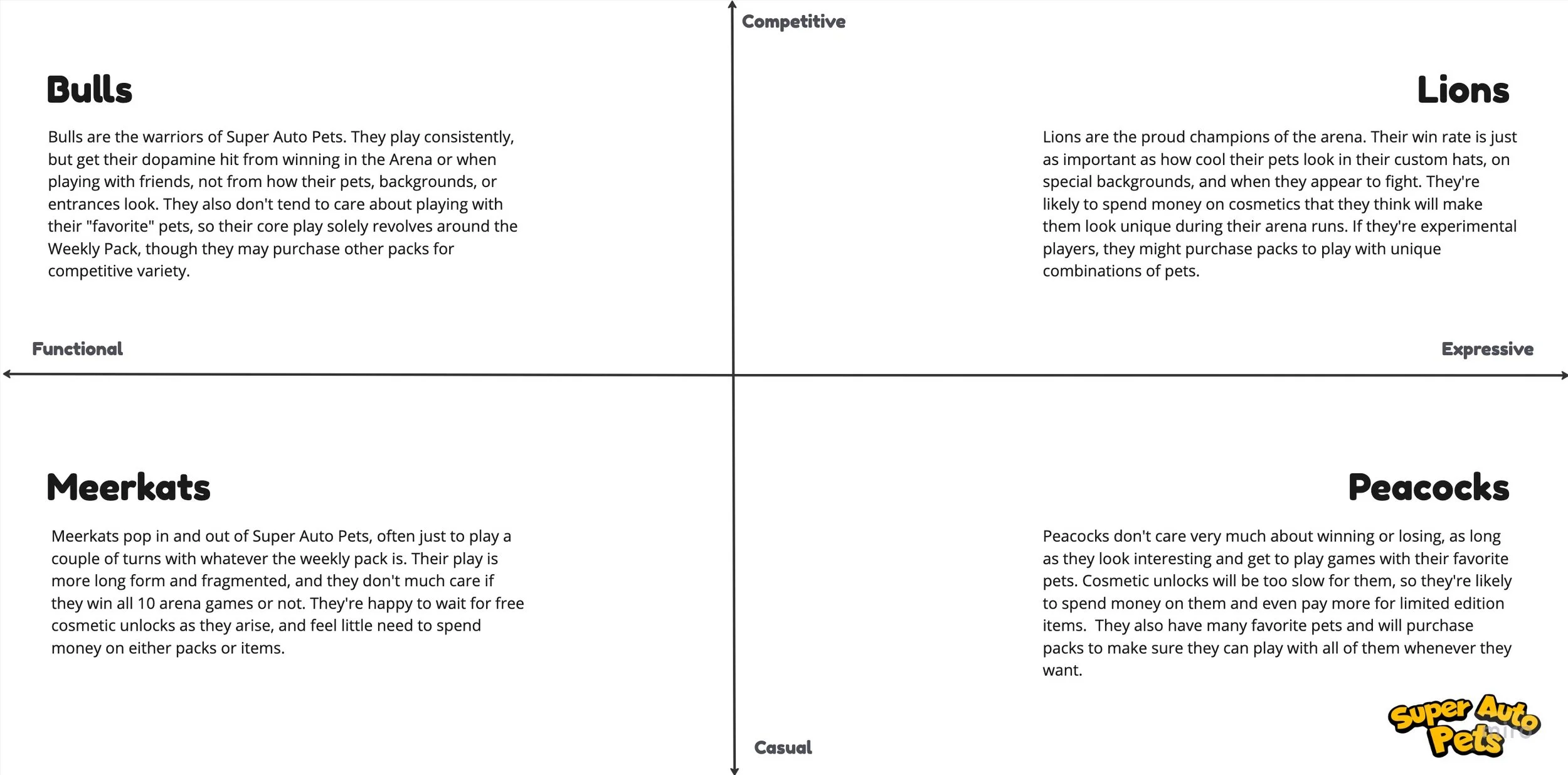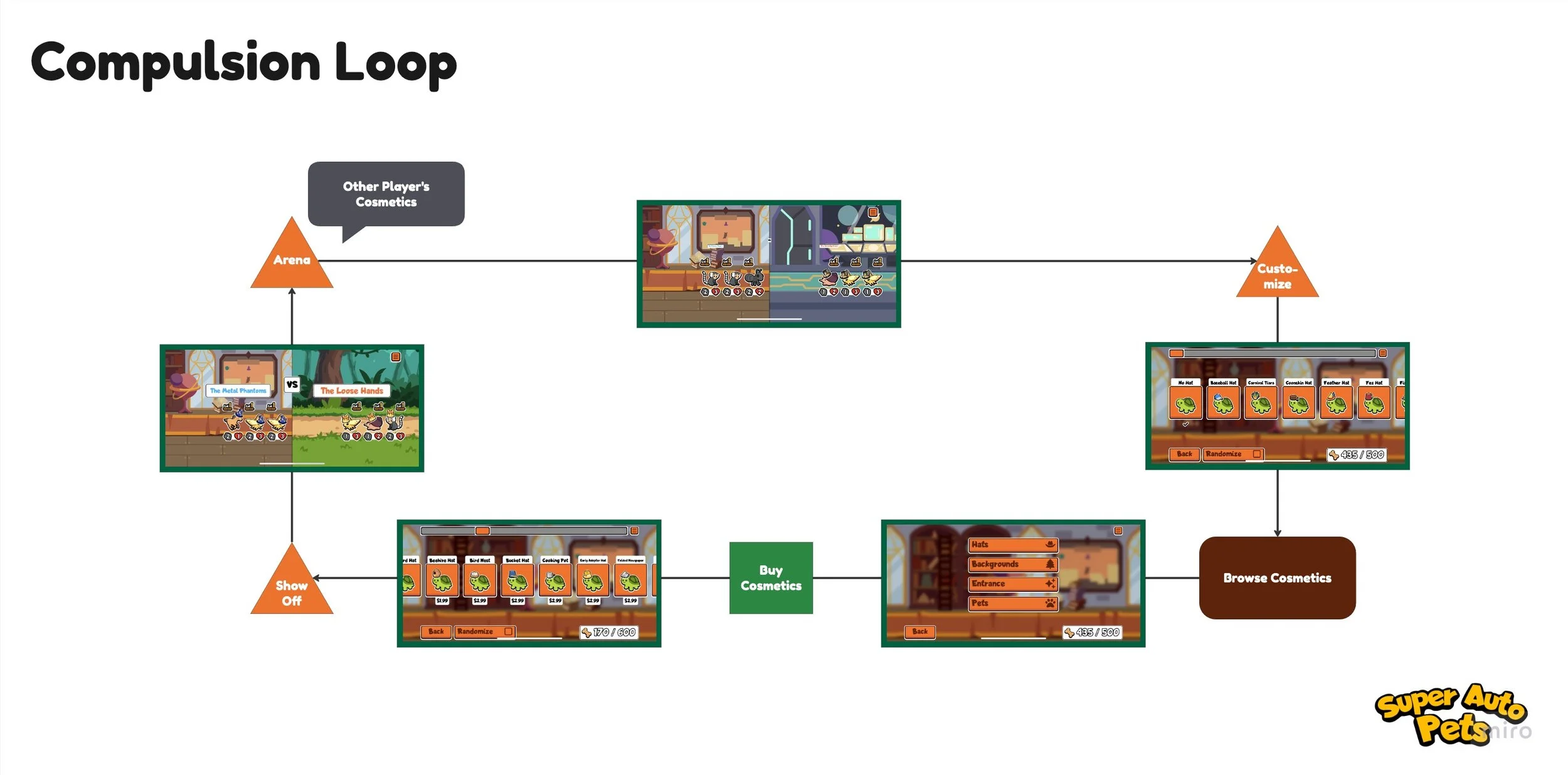ELVTR Game Analytics Course
A 7-week deep dive taught by EA and Zynga album, Rick Evans.
What follows are a few select assignments I completed during this multi-week course from May to July of 2023. You can read the recommendation letter that Rick kindly wrote for me at the close of the course and explore the work I completed for core sections of the course below.
RECOMMENDATION
“Throughout the course, Spencer has demonstrated an excellent understanding of the material covered in class and has made significant contributions through home assignments and a final portfolio project. Spencer excelled in using industry tools like SQL and Tableau to run data analysis, visualize and effectively communicate findings to both technical and non-technical audiences.
Feedback iteration has been an essential part of this course and an area where Spencer has also demonstrated significant achievement. Taking an active part in peer discussions and completing in-class and homework, Spencer successfully completed all stages and delivered well-thought-through mock data analyses on game data case studies.
It has been a pleasure working with Spencer, and his performance, commitment, and attitude have left a positive, lasting impression. I’m confident that Spencer will be able to put the skills and knowledge that he has extracted from this class towards the advancement of his career, and I look forward to seeing the fruits of his labor.
In conclusion, Spencer who successfully completed the Game Analytics course, has proven himself to be dedicated, skilled, and enthusiastic individual. His ability to apply theoretical concepts to real-world scenarios, proficiency in statistical analysis and data visualization, and aptitude for collaboration and teamwork make him a highly valuable candidate for any organization seeking expertise in game analytics and data-driven decision-making.”
- Rick Evans, ELVTR Course Instructor
Diablo IV Economy Analysis
INTRODUCTION
Diablo IV is the latest in a long running series of western-style Action RPGs from Blizzard Entertainment. Little has changed in the game’s core loop since the release of the original Diablo in 1996. Players raid enemy strongholds in the form of dungeons, cellars, battlefields, and castles to save Sanctuary from an existential demonic threat.
During these raids, they acquire experience to unlock skills and more importantly, gear that makes their characters more powerful. Synergies emerge between stats, skills, and gear that eventually allow players to plow through enemy waves in style until the end of the campaign, in which they also defeat the aforementioned demonic threat.
They then have the option to start a new campaign on a harder World Tier, which strengthens enemies and increases the rate of rare gear drops.
LOOP OVERVIEW
Diablo IV’s core gameplay and compulsion loop is to:
Kill demons and open chests (action)
Equip new gear and skills (anticipation)
Kill more demons and open more chests, faster (reward)
This release in the series also introduces a premium currency, platinum, which can be used to buy cosmetic items that is more of a sequence than a loop:
See players with cool cosmetics or open the shop tab
Purchase cosmetics by spending real money on platinum
Get social clout by equipping cool cosmetics
Interestingly, beyond the social aspect of seeing other players in the world – which is now a constant given the game’s always online requirement – these loops don’t interact at all. Players can’t earn platinum through play, and beyond seeing their own characters look flashier, cosmetics do not affect any core gameplay aspects.
ANALYSIS
The hypothesis at the core of Diablo IV’s economic model is that player motivation comes from more than how well they kill hordes of demons; it’s how good they look doing it. This is reinforced by several new design decisions, including:
All game areas match the player’s level automatically, meaning that enemies always scale. Players will never feel a sense of progression like one-shotting early-game mobs.
The game has an always online requirement. Players see each other, if they’re on the same server. This requirement also enables real-time, cooperative, world events.
Co-op is strongly encouraged, and a far superior gameplay experience.
There are two notable problems with Diablo IV’s economic model:
1) Limited drains for the main economic loop, leading to rampant gold inflation.
Because players constantly earn gold through their primary activities, and gear sells for greater and greater amounts as player’s level up, there’s an immense inflow of gold into player inventories.
These inflows scale quickly (as do merchant prices), but beyond the occasional purchase of a marginally better new sword, player gold inventories creep quickly into the hundreds of thousands of gold pieces, and then to millions essentially unchecked.
2) No core gameplay interaction with monetization.
Blizzard took the safest possible route with the premium currency – likely because of past controversy about Diablo Immortal, the latest mobile title in the franchise – and restricted it to only cosmetic player gear and gear for player horses.
They’re entirely reliant on player’s desire to look a certain way to earn additional revenue on top of the initial premium game sale, where they could, for example, give players much more incentive to play by letting them cash out 1M gold pieces for 100 platinum to gradually earn cosmetic improvements.
Tableau Dashboard: Top Publishers and Games by Genre (2010 - 2020)
Feature Lift Analysis (Mock Data)
Data was pulled from our raw events stream to measure the impact of our recent payment promo event on player behavior for periods both before and after the event. The “before” sample used events before March 15th, 2023, while the “after” sample used events between March 16th and April 1st, 2023.
Because of the date range discrepancy between these two periods, both sets of event data were normalized by day, then multiplied by 28 days, to simulate a typical month for both conditions.
FINDINGS
Link to Tableau Public Dashboard
Light, medium, and medium-heavy usage players (as grouped by session volume) all show more session volume and more games started after the promo period, according to the month estimate.
Taken more holistically by version, each active release branch saw decreases in overall session volume and games started after the promo period, according to the month estimate.
The promo event clearly affected our typically most engaged audience, reducing their activity and excitement to start new games. This had detrimental effects across game versions, according to the size of this cohort.
Players who typically engage less, however, showed promising signs of increased excitement after the event, according to their overall session volume and game starts.
RECOMMENDATION
Considering this overall mixed result from a large scale experiment involving almost 6,000 players, I recommend further analysis and potential qualitative research.
Using similar usage-based cohorts, we can drill into what the motivating factors were about this promo event for lighter-usage players, and see if they can be baked into game design systems instead of a one time event.






